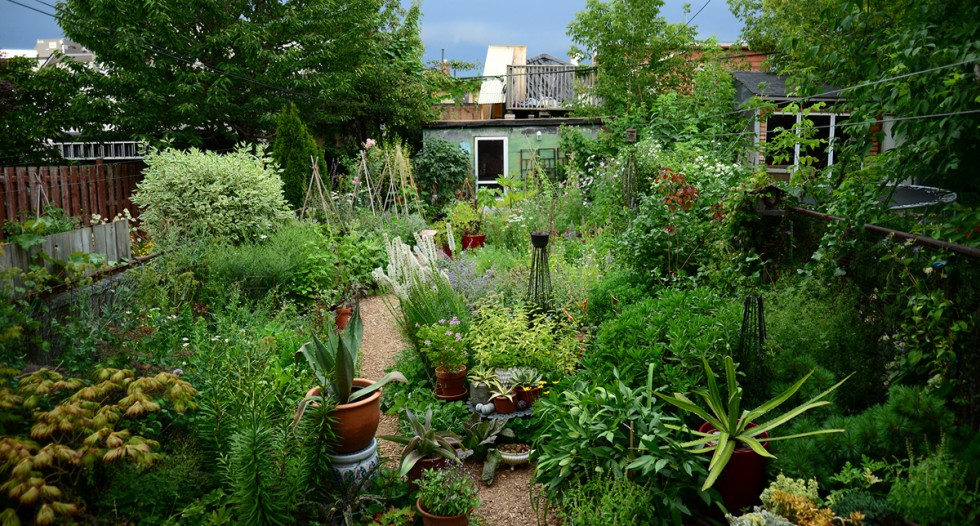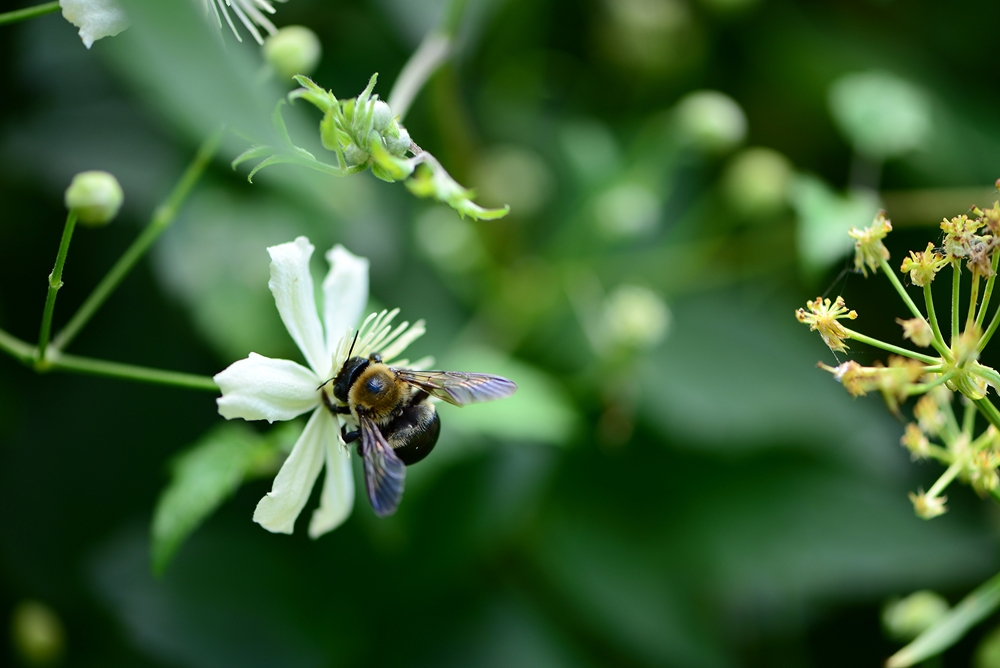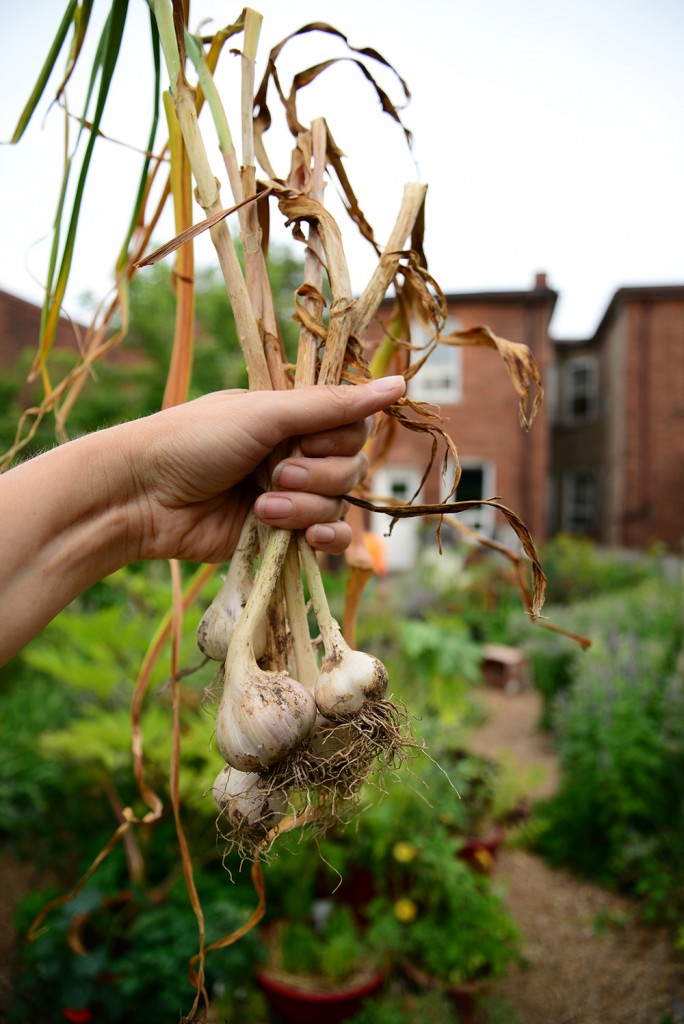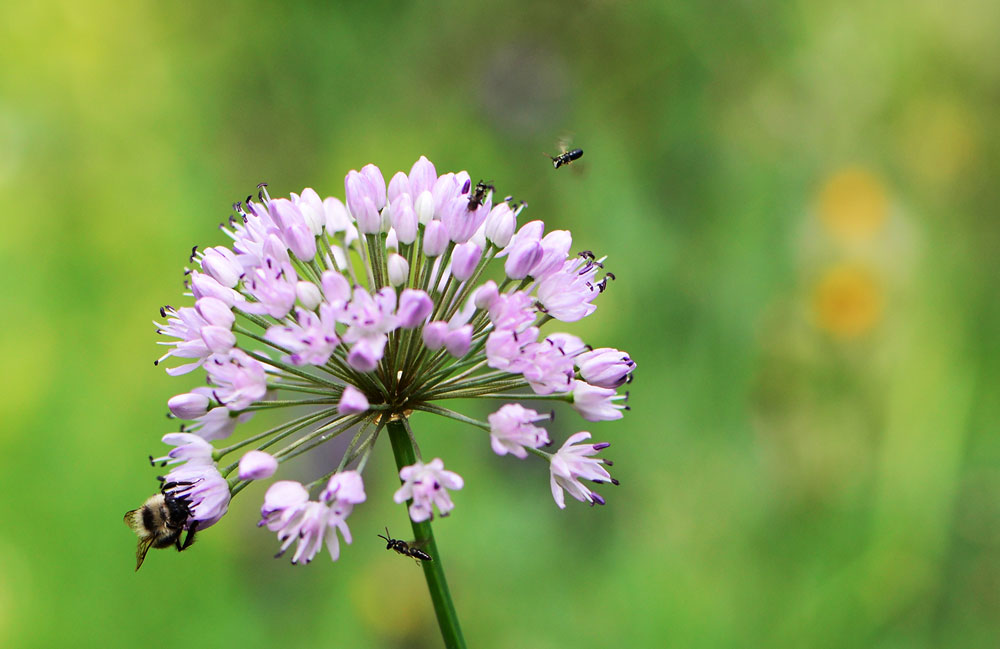How Photography Helps YouGrowGirl.com Grow
Gardening, harvesting your own produce, building verdant community spaces—all are popular activities at the moment. So to celebrate the height of growing season summer 2015, we continue to dig up dirt on photographers who are surrounded by more green (than red and blue). Gayla Trail, founder of You Grow Girl™, creates photos—lots of green photos. Whether captures are showcased on her site for aspiring gardeners, or images are destined to appear in one of her books, articles or speaker presentations, Trail’s photo files inform, illustrate, enrich and sometimes entertain.
A writer and photographer with a background in fine arts and ecology, Trail’s work has been published in numerous publications; a few include O Magazine, New York Times, Organic Gardening Magazine and Gardening Life. Some of her best-selling books are You Grow Girl: The Groundbreaking Guide to Gardening (Simon & Schuster, 2005), Grow Great Grub: Organic Food from Small Spaces (Clarkson Potter/Random House, 2010) and Easy Growing: Organic Herbs and Edible Flowers from Small Spaces. She is a sought-after speaker and respected voice in contemporary gardening media.
Making the Best Photos for Her Website
The Toronto, Canada, resident started You Grow Girl more than 15 years ago because at the time she was unable to find gardening media that met her needs as a young urban gardener working with a minimal budget. Today, her website offers a formidable archive of informative and entertaining articles, plus projects and writings from her life as an urban gardener.
Trail’s words are prized, but her addition of imagery further educates and inspires. “I love to see photos, and I understand the value they bring when describing or illustrating something—especially for beginning growers. Photos provide the glance at a garden space, a vegetable or even a process.” Since 2009, Trail has relied on a Nikon D90 and either a 35mm f/1.8 or an older AF NIKKOR 28mm f/2.8. She recently upgraded to the Nikon D610, plus the AF-S NIKKOR 24-85mm f/3.5-4.5G ED VR and AF-S VR Micro-NIKKOR 105mm f/2.8G IF-ED.
“My readers aren’t just interested in my garden—they also want to see how urban gardeners make the most of challenging spaces,” she smiles. “That said, I like to shoot wide and use Live View when I cannot see through the viewfinder for an overhead shot. “If I come across an inspiring, but inaccessible garden, while walking or biking around town, I lift the camera up over a high fence and frame the shot using Live View.” Photographing city gardens can be challenging. Aside from working within tight dimensions, Trail must deal with lines running through the frame—power lines, fences, roads, sidewalks and more. “To render a solid illustrative picture takes some planning, plus creative vision. If I go too wide, all of those lines can get a little curvy and distorted.”
…even bug photos land on her pages. “Their activity brings a sense of aliveness to a space, so getting a new gardener to accept, and eventually encourage, populations of beneficial insects, bees and wasps in a garden is important.”
From NIKKOR Wide to NIKKOR Macro
Trail’s wide-metro-views inspire. Her close-ups definitely educate. “Throughout each season I like to document everything. I post shots of the produce that I harvest, plus what can be done with those plants. Readers can see what’s coming out of my garden and compare it with their own harvest. I post educational content on themes such as gardening, composting, food prep—even commentary that describes how certain sections of a plant may be enjoyed as an edible so that I can inform readers about little known uses.” She favors photographs that are clean, simple, warm in tone and natural looking. She shoots most static scenes in Manual mode or Aperture priority and dials an aperture around f/4 for macro and close-up shots.
“A garden provides endless fascinating subject matter for macro photography. The AF-S VR Micro-NIKKOR 105mm f/2.8G IF-ED is a huge step up from the off-brand macro lens I’ve been working with. This lens shows none of the fall-out distortion that plagued my previous images. I can take crisper close-ups with less distortion and greater control. It’s an amazing tool and an absolute essential for garden photography. I think this lens will inspire a new series of work in the coming months.”
She likes a human touch too. “I try to include people when I can, or at least parts: for example hands holding a tomato, a body reaching out to pick berries in a raspberry patch, my partner Davin picking fresh herbs for dinner with our dog beside him. Including people provides warmth, and gives a sense that we too are a part of the garden. In my wide shots I use people to help provide scale.” She furthers, “I find that many gardeners do not like to have their photo taken. This may be because we tend to be sweaty and not at our best when gardening. Framing the shot with just a portion of the gardener’s body shown satisfies their need for privacy, but still infuses the image with a touch of human life and warmth.”
Valuable and essential to a healthy garden, even bug photos land on her pages. “Their activity brings a sense of aliveness to a space, so getting a new gardener to accept, and eventually encourage, populations of beneficial insects, bees and wasps in a garden is important,” she stresses. “Assisting pollinators is a critical topic of conversation right now; the numbers of bees have declined due to an increase in pesticide use and a lack of habitat—especially within urban centers. On a sunny day my garden is teeming with a diverse range of pollinating insects flittering about from flower to flower.”
“I try to include people when I can, or at least parts…Including people provides warmth, and gives a sense that we too are a part of the garden.”
“This view helps gardeners get a feel for how much plant material can really fit into a small urban garden. My plot is approximately 17 feet by 50 feet. This is an example of one of my big picture wide shots.”
Wide View of a Not-So Wide Backyard
Continuing to describe most popular shots, she shows her own garden as taken through a second floor window of her house. “This view helps gardeners get a feel for how much plant material can really fit into a small urban garden. My plot is approximately 17 feet by 50 feet. This is an example of one of my big picture wide shots.” All were taken primarily using f/4 to f/5.6, depending on shifting light through the seasons.
This glance is great for setting initial expectations and gaining overall view. Its value increases when placed in a series captured sequentially over the long term. Says Trail, “Through images I can track and show seasonal changes. New gardeners gain an understanding of what to expect over time, and they can view stages that certain types of plants go through month-to-month.” You Grow Girl readers live around the world in varying growth zones and climates. Trail feels all enjoy comparing seasonal growth through photos. “Aside from comparing, it’s fun to notice the contrast between my rather minimalist winter garden, versus the jungle it becomes by high summer.”
Photo series such as this find the perfect home on YouGrowGirl.com. Trail has organized content categories much like a magazine—providing a simple pathway for locating what is desired.
-
Grow encompasses mostly how-to garden information and general organic practices.
-
Dream is the inspiration section covering garden design, gardens visited and interviews.
-
Eat showcases recipes and preserving/canning.
-
Create is an archive of her own botanical art projects, plus creative and building projects to try.
-
Explore is meant to foster discovery, observation and curiosity around gardening. It is also an archive for some of her lengthier why-to and travel articles.
“To capture a single insect on a flower use a tripod and frame your camera on a spot where you think it might land. If you don’t have a tripod, try sitting on a stool. It takes patience, but it’s easier to wait for an insect to come to you than to chase it around.”
You Go Girl: From Nikon D90 to Nikon D610
Trail is making the most of her new camera—pairing it with both new lenses, plus her stash of old lenses. She says the large size and quality of RAW NEF images offer a significant boost to her print work, specifically book and editorial assignments. “Good photographs enhance work, especially in the gardening genre since it is so specifically visual, and draw people in to read your writing. Attention spans aren’t what they used to be; it is no longer enough to be a good writer.”
Over the years Trail has worked with all sorts of cameras—from low quality toy digitals and film cameras, to low-fi box cameras and homemade pinholes, through to expensive high quality gear. “Good tools go a long way in creating good photos, but the most important tools are your creativity and eye for framing and capturing a scene.” In closing she asserts, “Familiarize yourself with your gear. Take lots of photos every day in all sorts of lighting conditions to develop a style. If you feel stuck in a rut, change your perspective. I bring a stool out to the garden so that I can sit low or stand higher and shoot from a different angle.”










